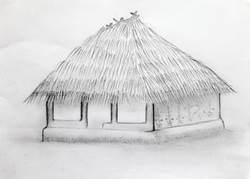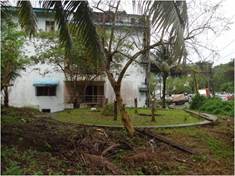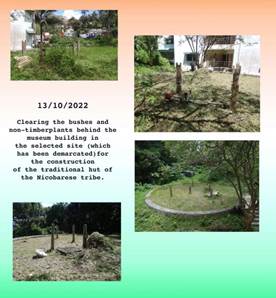New Delhi : Ministry of Culture through its attached, subordinate, and autonomous organizations successfully completed the preparatory phase of the Special Campaign 2.0 which was held from 14.09.2022 to 30.09.200 and uploaded the Target in respect of Ministry of Culture on the SCDPM Portal of DAR&PG on 30th September, 2022.
The prime objective of the campaign is to ensure the disposal of pending matters in government offices and Ministries and, further include strengthening internal monitoring mechanisms, training officers in the record management and digitization of the physical records for improved record management.
The Special Campaign 2.0 is being carried out in two phases- Preparatory phase & Implementation phase. The focus areas under Campaign 2.0 involves MP’s references, References from state Governments, Inter-Ministerial References, Parliamentary Assurances, PMO References, Public Grievances and Appeals thereof, Record Management and review of the existing rules and procedures to reduce compliance burden and promote ease of living to the citizens.
The implementation phase of the Special Campaign 2.0 began with a daylong workshop at National Archive of India (NAI) for all officers of MoC with special focus on record management and files archiving guidelines and discussions. During this phase, some of the achievements are:
100 % disposal in the IMC References,
About 50% % disposal of pending PMO references as on date.
70 % files out of total physical files earmarked for review, have been reviewed.
200 sites out of 225 Swachhata Campaign sites identified under this campaign, have been carried out successfully.
Ministry of Culture also has taken up this campaign to Left Wing Extremism Area like Jagdalpur (Chhattisgarh). The Sub-Regional Centre, Jagdalpur of Anthropological Survey of India (ANRC) is actively participating in the Special Campaign 2.0 with innovative ideas like transforming the bushes-ridden campus into raising a Dorla tribal hut which will further expand the existing open- air anthropological museum with community participation. Jagdalpur is in the Bastar region, which has one of the highest concentrations of tribal population in India and the Anthropological Museum lies at the heart of the city which showcases the rich cultural heritage of the tribes and witnesses large tourist footfall in the region. The proposed Dorla hut will act as a centre for dissemination of information and knowledge on the bio-cultural aspect of the people of the region.


Dorla Tribal Hut
As a first step of the Special Campaign 2.0 activities, the staff members cleaned the campus on 2nd October, 2022. After that, the Dorla tribal community members of the region were contacted and their participation was ensured which reinforces the Jan -Bhagidari effort of Govt. The Dorla community is a settled agricultural tribe living in permanent villages. Their houses are built amid agricultural land and arranged linearly in rows. The houses may either be two-sloped or four- sloped, but the latter type occurs more in number, usually facing either east or west. The side walls of the homes are generally made by plastering mud over bamboo wattle or slender twigs. Date palm leaves are used to do the thatching of the house. The community members from Konta of Sukma District will also be joining the team soon with bundles of thatching leaves to begin the work. The construction of the Dorla hut is expected to be completed by 30th October,2022.
In Andaman and Nicobar Islands the ANRC, Port Blair, under this special campaign 2.0 have carried out a series of cleanliness activities in and around the office and museum building at ANRC Port Blair from 2nd -19th October, 2022. A special cleanliness drive was carried out by clearing the bushes and garbage behind the office-cum-library building at the entrance gate of Zonal Anthropological Museum (ZAM) on 17 October 2022. All the staff of ANRC, Port Blair participated actively by cleaning the area and disposing of all the accumulated garbage and weeding out the grasses from the garden to create a visitor-friendly ambience at the entrance gate of the museum building.


Before After
A special drive has been initiated towards utilization of the unused museum campus which has been lying as a dump yard for years. The bushes, non-timber plants and wild grasses occupying the said area have been cleared. In the cleaned area, traditional dwelling units/huts of the Nicobarese tribe from the Nicobar Islands will be raised. These huts will be built using the natural materials available from the tribe’s habitat to maintain indigeneity. This activity is being carried out with the involvement of the tribal leader/ captain of the Tribal Council along with the assistance from the local people. This will also be learning stint on eco-friendly living, for local people from the tribal culture of that region.

As the tourists to Andaman are restricted to travel to Nicobar group of this display of traditional Nicobarese huts will be a tourist’s attraction. Moreover, our museum in Port Blair is an important tourist centre and situated in the heart of the town this live size Nicobarese hut will add value to the Museum as well as the Port Blair town. In the year 2004, due to catastrophic natural disaster caused by Tsunami, most of the traditional beehive dwellings had submerged due to high sea waves. As a part of reviving such traditional huts and for showcasing them to the public, ANRC, Port Blair is initiating the work for installation with the active participation of the community members.
A tribal (Nicobarese) representative for the islands of Chowra and Teressa also visited the ANRC, Port Blair office as a resource person to assist in creating the Nicobarese hut. He inspected the selected site where the traditional hut of Nicobarese tribe will be raised/constructed and a detailed discussion was held along with the scientific staff of ANRC, Port Blair.
In addition, the traditional dwelling unit/hut of some of the Particularly Vulnerable Tribal Groups VIZ Jarwa, Onge, etc. are also being raised/constructed in the museum premises. The bushy backyard of the Office-cum-Auditorium building will be made a cultural landscape by planting flower saplings, medicinal plants (used by the tribal as well as the local population) which will serve as a place of tourist attraction.
****

Comments are closed.